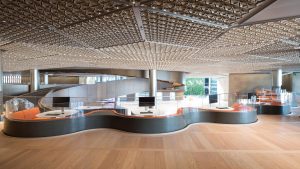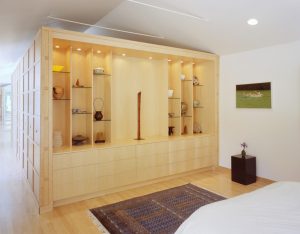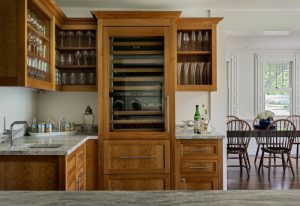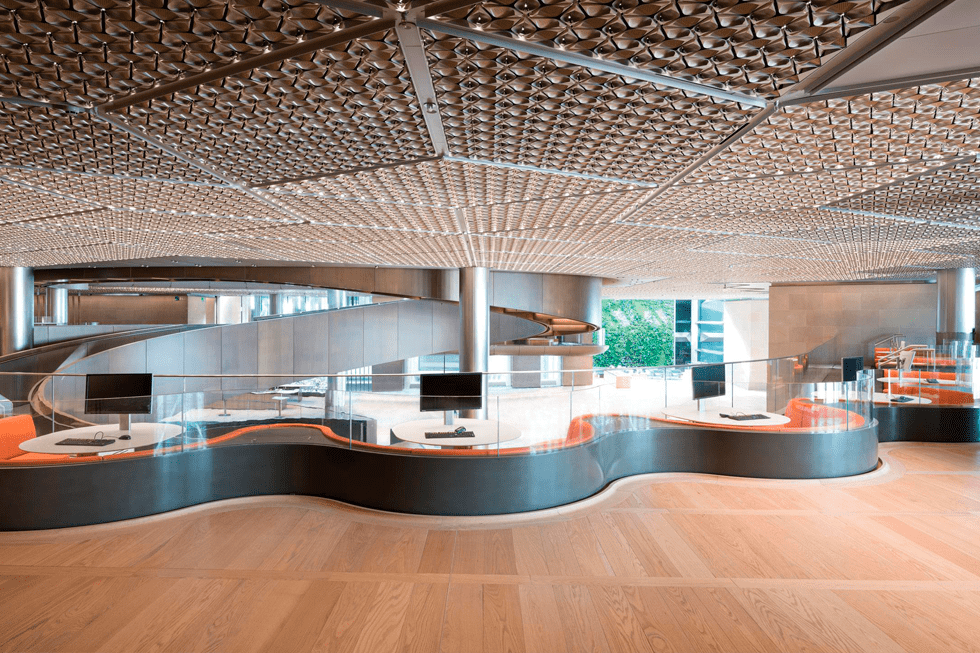Plentiful, sustainable and oh so versatile, this one-of-a-kind resource is favored for its extremely long service life, low carbon footprint, and overall environmental attributes.
Did you know that …
“Buildings framed in wood release 26 percent less carbon than steel-framed buildings, and 31% less than concrete-framed buildings. Similarly, when people install wood floors instead of vinyl flooring, carbon emissions can be as much as 20 times lower. And, by building with wood, we’re opting to store additional carbon in everyday products and buildings.” The U.S. Forest Service
And did you know that …
Everything from flooring, ceiling beams and panels, cabinetry, trim work, and custom pieces of furniture can be made from American Hardwood species like red oak, maple and cherry?

Photo: Nigel Young/Foster+Partners
American Red Oak, the dominant species in the U.S. hardwood forests—is known for its distinctive grain. The wood is not always red in color, and the name comes from the leaf color in the fall. Red oak trees are very tall; grow naturally in North America; and are widely distributed throughout most of the eastern U.S. in mixed hardwood forests. There are many sub-species, which grow from north to south; some high in the mountains and others on low land giving rise to different characteristics. Red oaks are regarded as highly sustainable and, being the largest species group, are more abundant than the white oaks.

Photo: Sharon Risedorph
American Maple—quite different from other maples throughout the world—grows naturally in the hardwood forests of North America and is world-renowned for its delicate color, hardness, fine grain and finishing quality. It is a cold climate species which favors the more northern states, but can also grow throughout the U.S. in mixed hardwood forests. The trees often grow in dense stands on many types of soil, and are famous for their maple syrup. Harvesting is seasonal (autumn and winter).

Courtesy Crisp Architects, photo by Rob Karosis
American Cherry—very abundant and widely available in New York, Pennsylvania, West Virginia, and Virginia—has a relatively short rotation, taking less time to mature than other hardwoods. The narrow sapwood is a light pinkish color, while the heartwood varies from rich red to reddish brown. It is a high-quality cabinet wood and may contain streaks of lighter sapwood and dark gum pockets. With a straight unpronounced grain and fine texture, the wood is medium density and moderately strong. It is easy to machine, shape and connect, and when sanded and polished, produces an excellent smooth, glassy finish.
There has never been a better time to specify American hardwoods. The benefits of using these unique species are significant. Get started, today!
Information source: American Hardwood Export Council



